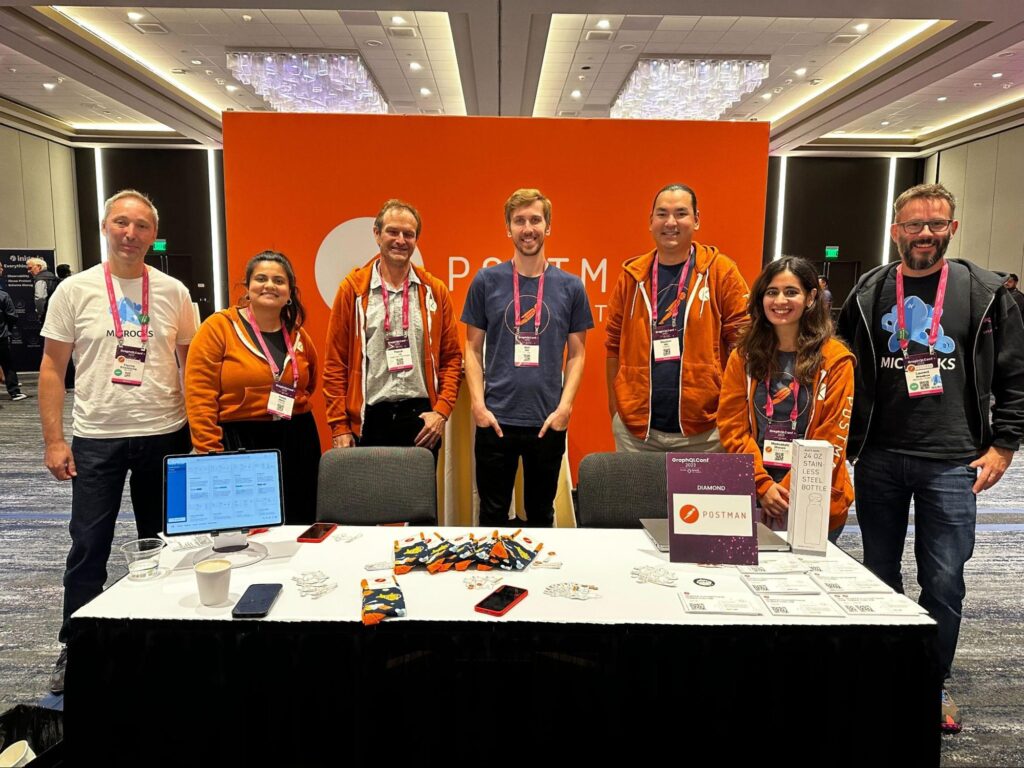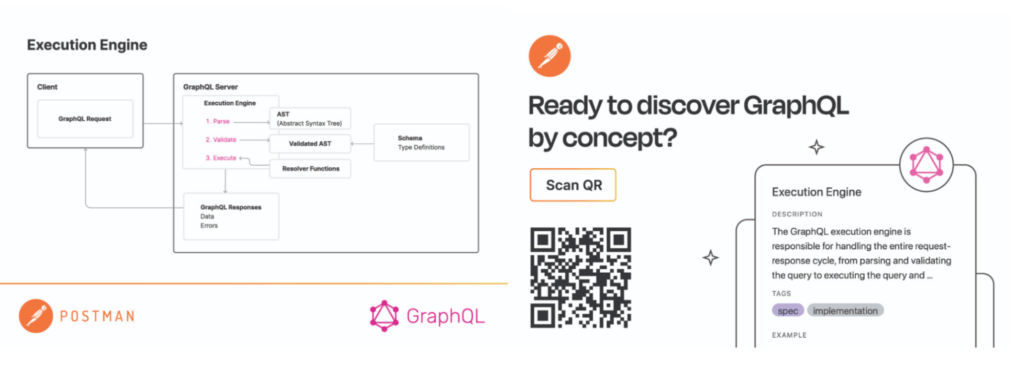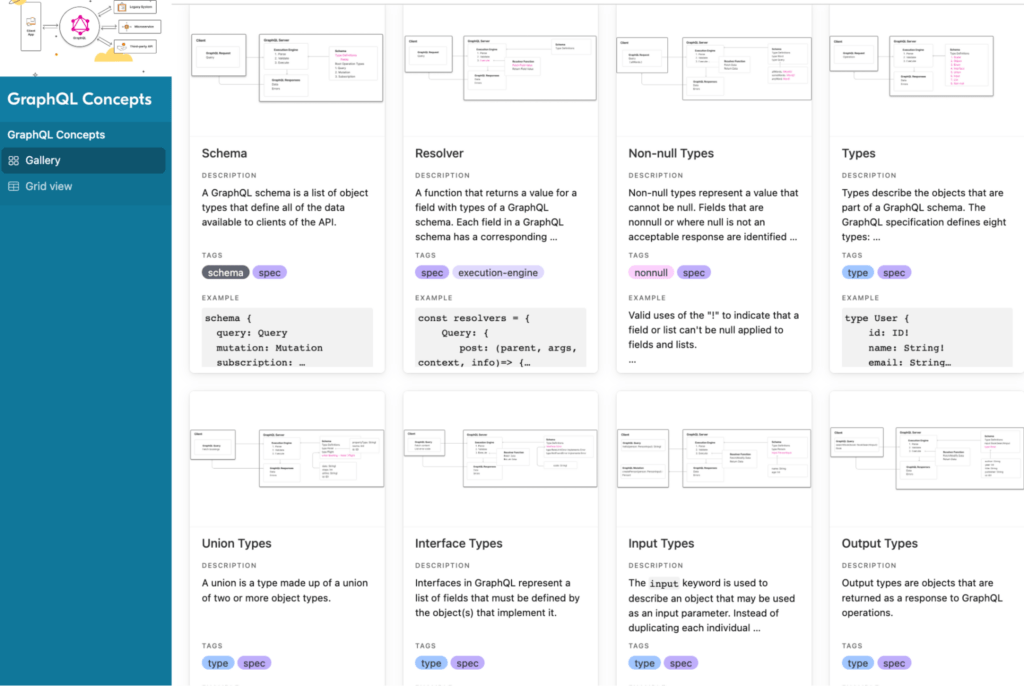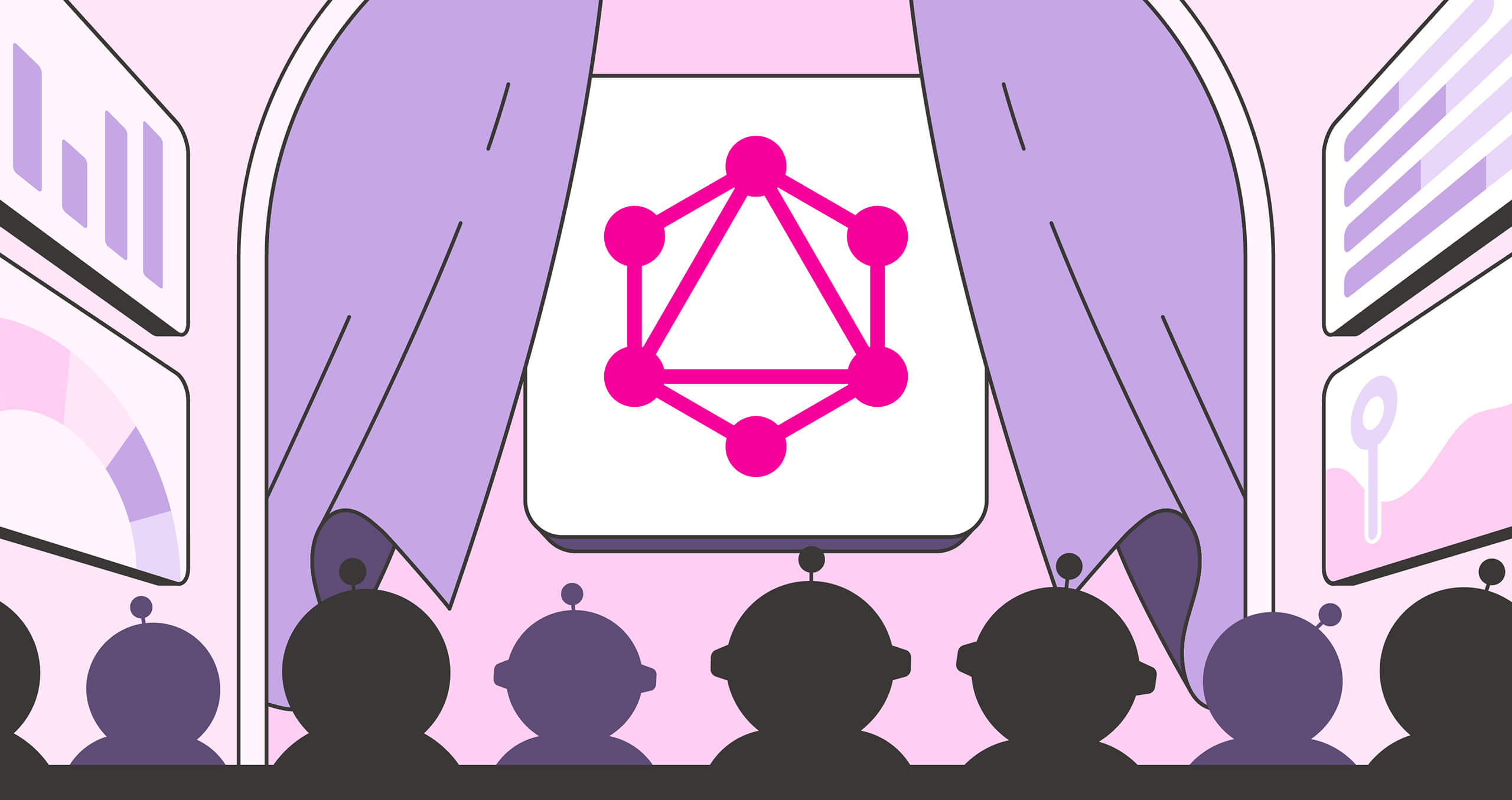Postman at GraphQLConf 2023
The GraphQL community recently gathered for GraphQLConf 2023 on September 19-21 in the San Francisco Bay Area. This groundbreaking conference brought together global developers, enthusiasts, and experts to celebrate GraphQL’s collaborative essence. Among the key contributors was Postman, a proud Diamond Sponsor and dedicated member of the GraphQL Foundation. In addition, Postman GraphQL Technical Lead Doc Jones played a pivotal role in the organizing committee and marketing efforts for the conference.
Related: Download the Postman GraphQL Client
The three-day event showcased how GraphQL, as an open source specification, flourishes through community wisdom and dedication. Speakers from Netflix, Intuit, Meta, AWS, and others emphasized the significance of community-driven conferences like GraphQLConf 2023. In this blog post, we’ll explore highlights, innovations, and takeaways from the exciting conference.


Key takeaways from the conference
Whether you missed the conference or want helpful refreshers, the highlights below delve into GraphQL’s impact, vibrant discussions, and the exciting possibilities ahead.
Unconference kickoff
The conference commenced with an engaging “unconference” session where attendees brainstormed various topics. Discussions ranged from Federation, exploring the challenges and promise of merging multiple GraphQL graphs into a supergraph, to debating schema-first versus code-first approaches. Additionally, participants explored GraphQL’s role in domain-driven design, emphasizing the diverse and informative discussions that set the stage for the event.
GraphQL Fusion revolutionizes federation
Michael Staib, a member of the GraphQL Technical Steering Committee and founder of Chilli Cream, introduced GraphQL Fusion, an open spec by ChilliCream, The Guild, Hasura, IBM, AWS AppSync, WunderGraph, and others; it simplifies the development of distributed GraphQL services and revolutionizes remote service execution and federation under the GraphQL Foundation, challenging existing federation protocols.
Client Controlled Nullability proposal
Stephen Spalding from Netflix gave a talk about the Client Controlled Nullability proposal in GraphQL that empowers client developers to manage nullability, helping them avoid costly errors and embrace more robust GraphQL development practices. You can contribute or participate in the discussions for the spec by participating in the Client Controlled Nullability Working Group.
GraphQL Mesh Workshop unifies data sources
The GraphQL Mesh workshop by Arda Tanrikulu and Gil Gardosh from the Guild was an interactive, hands-on workshop that demonstrated the ability of the platform to unify data sources such as REST, gRPC, and other APIs and simplify GraphQL API development. Additionally, they shared intriguing results from recent gateway benchmark tests, offering valuable insights for developers. Check out the results here.
Panel discussion on open standards and AI
A key highlight was the panel discussion featuring Idit Levine and Keith Babo from Solo.io, Uri Goldshtein from The Guild, Benjie Gillam from Graphile, and Lee Byron from the GraphQL Foundation. They highlighted the significance of open standards and collaboration in the GraphQL community. The discussion also touched on AI’s potential role in query planning and optimizing developer tools, with a vision of AI influencing the future of application development by enabling dynamic apps tailored to user interactions.
5 talks by Postmanauts
And, of course, Postman was there to deliver a series of exciting talks at the conference. Let’s explore some of the insights in this quick overview:
1. “Can GraphQL be FAIR?”
Postman Data/AI Lead Pascal Heus explored the intriguing possibilities of integrating GraphQL with FAIR (Findable-Accessible-Interoperable-Reusable) principles, shedding light on how this fusion can broaden GraphQL’s reach and adoption. Additionally, he delved into the exciting potential of merging GraphQL with SPARQL, sparking discussions on exposing SPARQL endpoints as GraphQL APIs and integrating RDF data into GraphQL’s data graph. Watch the full talk.
2. “Building Tooling That Speaks GraphQL”
Postman Technical Lead Tim Hall shared insights on leveraging graphql.js to create powerful GraphQL tooling. He discussed the world of parsers, visitors, and ASTs (Abstract Syntax Trees) and demonstrated practical applications, drawing from his experience with Postman’s GraphQL client. Watch the full talk.
3. “Not Your Regular Rate Limiting”
In this lightning talk, I explored innovative strategies to tackle rate-limiting complexities within GraphQL’s single endpoint architecture. I also shared practical techniques and real-world examples to optimize rate limiting, ensuring the scalability and security of your GraphQL-based applications. Watch the full talk.
4. “Increase your Productivity with No-Code GraphQL Mocking”
Microcks Co-Founder and Postman Director of Engineering at Postman Open Technologies Laurent Broudoux shared insights on increasing productivity with no-code GraphQL mocking. This approach simplifies API development, enhances collaboration between frontend and backend teams, and strengthens your CI/CD pipeline with automated tests derived from mocks. Watch the full talk.
5. “Breaking the Mold: Innovative Approaches to Testing GraphQL APIs”
Postman Developer Advocate Pooja Mistry delved into the complexities of testing GraphQL APIs. She explored how to validate schemas, handle errors, and address performance challenges in GraphQL testing. Additionally, she demonstrated various tools and methods, including using Postman for GraphQL testing. Watch the full talk.
Wrapping up
As the GraphQL community continues to evolve, this conference has left us with a sense of excitement and anticipation for the future of GraphQL. The insights, strategies, and tools all speakers shared contribute significantly to the ongoing growth and innovation within the GraphQL ecosystem.
Additional resources
Here are additional resources to help you get started with GraphQL and Postman:
GraphQL Concepts
The GraphQL Concepts project, spearheaded by Doc Jones in collaboration with me, has created over 45 GraphQL “concept cards.” We were proud to see how much these informative cards were prominently featured at GraphQLConf, capturing the attention of curious attendees.

The concept cards serve as the foundational elements of contemporary GraphQL APIs. Some of these concepts are derived from the GraphQL Specification and are tagged as “spec,” while others fall under the “non-spec.”
Each card concisely represents a GraphQL concept, featuring an illustration, a comprehensive definition, illustrative examples, and a detailed article for in-depth exploration. You can access the entire collection of cards on Airtable.

The primary objective of this project is to demystify GraphQL concepts and make them more accessible to a broader audience. To further enhance accessibility and openness, we welcome feedback and contributions from the community; you can share your thoughts and insights for GraphQL Concepts in a comment below and here.
Getting started with Postman’s GraphQL v2 Client
- GraphQL for Postman: Learn how to work with the GraphQL interface in Postman to create queries, mutations, and subscriptions and load GraphQL schemas.
- Working with GraphQL APIs in Postman: Bite-sized video demonstrating how to use features such as introspection, write GraphQL operations and work with scripts in Postman.
- Emerging trends in GraphQL APIs: Explore the technology powering the future of data exchange.

What do you think about this topic? Tell us in a comment below.